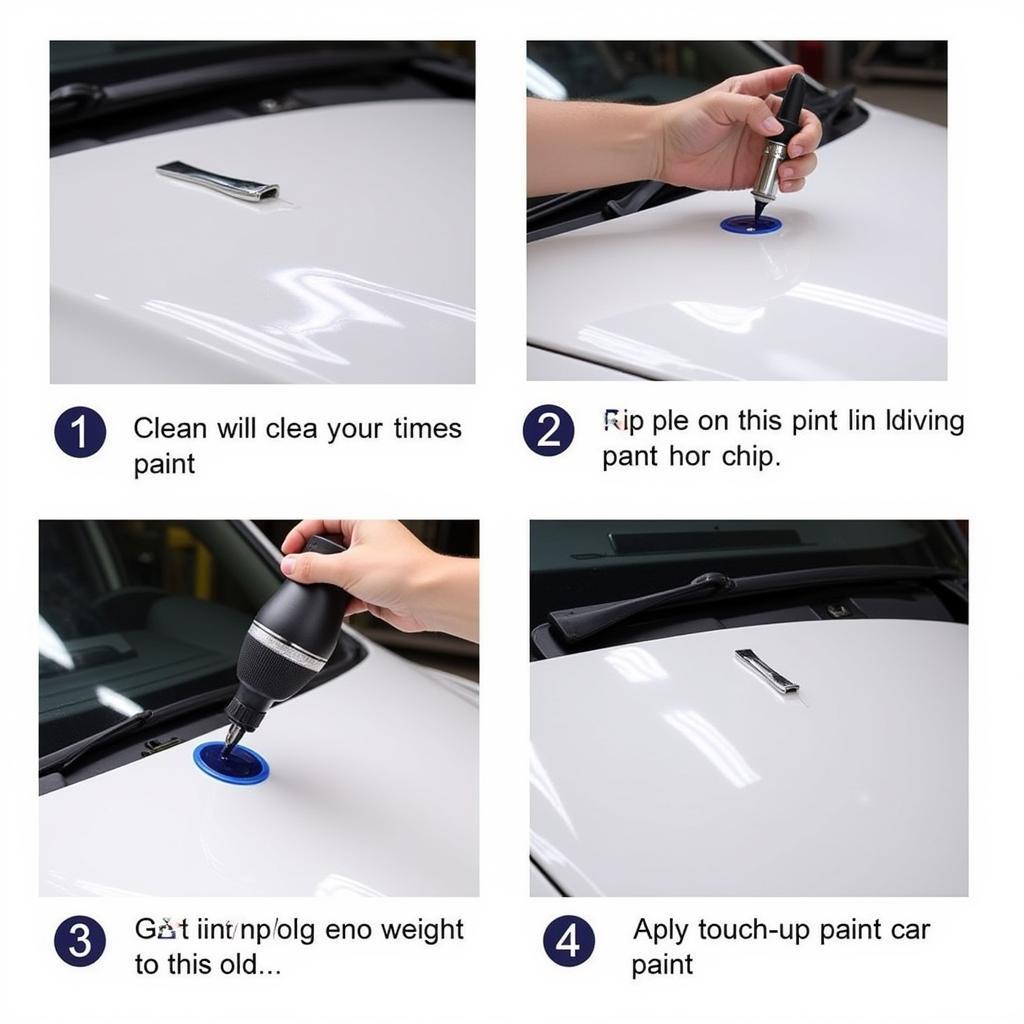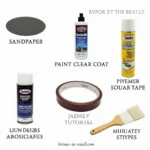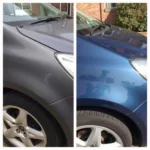Dealing with paint chips on your car can be frustrating. Whether it’s a small nick from a flying rock or a larger scrape from a parking lot mishap, these blemishes detract from your car’s appearance and can even lead to rust if left untreated. Fortunately, repairing paint chips is often a manageable DIY project, saving you the expense of a professional repair. This guide will walk you through the process of fixing those annoying paint chips and restoring your car’s finish.
Assessing the Damage: Minor vs. Major Paint Chips
Before you start, it’s important to assess the extent of the damage. Minor chips, affecting only the clear coat or top layer of paint, are easily fixed with touch-up paint. Deeper chips that expose the primer or bare metal require more involved repairs. For very large or deep chips, or if you’re uncomfortable with DIY repairs, seeking professional help at a reputable auto body shop is recommended. Do you want professional help for your BMW? Check out our guide on BMW car paint repair.
Repairing Minor Paint Chips: A Step-by-Step Guide
For minor chips, follow these steps:
- Clean the Area: Thoroughly clean the chipped area with soap and water, then dry it completely. This ensures proper adhesion of the touch-up paint.
- Apply Touch-Up Paint: Carefully apply a small amount of touch-up paint directly to the chip, using a fine-tipped brush or a touch-up pen. Avoid applying too much paint, as this can lead to drips and an uneven finish. Need help finding the right paint? Learn more about car paint work repair.
- Level the Paint: If necessary, use a toothpick or a razor blade to carefully level the touch-up paint with the surrounding surface. This is especially important if you’ve accidentally applied too much paint.
- Let it Dry: Allow the touch-up paint to dry completely according to the manufacturer’s instructions. This may take several hours or even overnight.
- Apply Clear Coat (Optional): If the chip was deep enough to expose the color coat, you may want to apply a layer of clear coat after the touch-up paint has dried. This helps protect the repair and restore the shine.
- Polish and Wax (Optional): Once the clear coat is dry, you can polish and wax the area to blend it seamlessly with the surrounding paint.
 Repairing a Minor Paint Chip on a Car
Repairing a Minor Paint Chip on a Car
Looking for videos on how to repair car paint chips? Check our resources on YouTube car paint repair.
Tackling Deeper Paint Chips: When More is Needed
Deeper chips, especially those that expose the primer or metal, require a more involved approach:
- Sand the Area: Use fine-grit sandpaper to smooth the chipped area and remove any rust. Be careful not to sand too aggressively, as this can damage the surrounding paint.
- Apply Primer (If Necessary): If the bare metal is exposed, apply a thin layer of automotive primer to protect it from rust. Allow the primer to dry completely before proceeding.
- Apply Touch-Up Paint: Apply several thin coats of touch-up paint, allowing each coat to dry before applying the next. Building up thin layers helps achieve a smooth and even finish.
- Level and Sand: Once the touch-up paint is dry, use fine-grit sandpaper to carefully level the paint with the surrounding surface. Be very gentle to avoid removing too much paint.
- Apply Clear Coat: Apply several thin coats of clear coat, allowing each coat to dry before applying the next.
- Polish and Wax: Once the clear coat is dry, polish and wax the area to blend it seamlessly with the surrounding paint.
For minor touch-ups, learn more about minor paint repair car options.
Preventing Future Paint Chips: Proactive Measures
While some paint chips are unavoidable, taking preventative measures can minimize their occurrence:
- Regular Washing and Waxing: Keeping your car clean and waxed creates a protective barrier against the elements and minor abrasions.
- Parking Strategically: Park away from other cars and avoid parking under trees or in areas prone to flying debris.
- Touch-Up Chips Promptly: Addressing small chips as soon as they occur prevents them from growing larger and becoming more difficult to repair.
- Invest in Paint Protection Film: Consider applying paint protection film to vulnerable areas like the hood, bumper, and mirrors.
Need a paint repair service in Basildon? You might want to check out car paint repair Basildon.
Conclusion
Repairing paint chips on your car can seem daunting, but with the right approach and a little patience, you can often achieve professional-looking results. By following the steps outlined in this guide and taking preventative measures, you can keep your car looking its best and protect its value for years to come. How can I repair paint chips on my car? By following this guide, you’ll be well on your way to a flawless finish!
FAQ
- What kind of paint should I use for touch-ups? Always use touch-up paint specifically formulated for your car’s make, model, and year.
- Can I repair paint chips in cold weather? It’s best to repair paint chips in moderate temperatures. Extreme cold or heat can affect the drying and curing process.
- How long does it take for touch-up paint to dry? Drying times vary depending on the type of paint and the ambient temperature, but generally allow several hours or overnight for complete drying.
- What if the chip is larger than a dime? Larger chips may require professional repair for optimal results.
- Can I use nail polish for touch-ups? No, nail polish is not formulated for automotive use and will not provide a durable or lasting repair.
- How can I prevent rust in chipped areas? Address chips promptly and use primer if bare metal is exposed.
- What if I’m not comfortable with DIY repairs? Consult a professional auto body shop for assistance.
Need more help? Contact us via WhatsApp: +1(641)206-8880, Email: [email protected]. We have a 24/7 customer support team.


